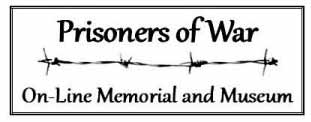The impact of Italy’s capitulation on POWs in Northern Italy
When Italy signed the Armistice and news reached northern Italy on 8 September 1943, the fate of many Australian Prisoners of War hung in the balance; including that of my two uncles – Ronald McIntyre VX48203 and Charles Mills VX48196.
In July 1940 they both enlisted in the 2/32nd Battalion 9th Division and were Rats of Tobruk. After the Rats were withdrawn from Tobruk in September 1941 the 2/32 were in Palestine and Syria before supporting the British 8th Army in the Battles of El Alamein.
Both of my uncles were captured on 17 July 1942 when ‘A’ Company was ordered forward and overshot the distance. Wireless communication had broken down and a runner could not get through so they were virtually isolated. Dawn broke and with it came a large German tank and the order “lay down your arms Aussies for you the war is over”.
The Germans handed the prisoners over to the Italians and they were initially held near Benghazi until they were shipped across to Italy and interred near Brindisi. In early 1943 they, and many others, were railed to Prisoner of War Camp PG57 Gruppignano (75 miles north east of Venice). Most of the POWs here were Australian and NZ and many old friendships were probably renewed.
In April 1943, Italy had a significant food crisis and those POWs considered fit for work were transferred from PG57 Gruppignano in the north east corner of Italy across the country to PG106 Vercelli near Milan to work on farms and the rice fields. Vercelli was a cluster of approximately 29 work camps and life in general was easier for the POWs. At Gruppignano, they had left behind the cruel and sadistic Commandant Calcattera, whereas in Vercelli most of the farmers treated our POWs well. Some were treated like family and romantic liaisons were not unheard of.
When news of the Armistice reached PG106 on that fateful September day, it was a time of significant indecision for not only POWs but also the Italian guards. The day before Australians and allies had been their enemies, and now they were not. What to do? Many of the guards just packed up and went home, aware that it probably wouldn’t be long before the Germans arrived and there was the distinct possibility that they could be forced into labour camps. A wonderful opportunity for our POWs to shoot through – and so began the Great Escape – so many of our POWs on the run, dreaming of home with their eyes firmly set on neutral Switzerland.
Now the POWs had three options to consider. The first, to head north to neutral Switzerland and even though it had been a particularly cold autumn, cross the magnificent Swiss Alps; totally ill equipped with winter approaching or, head south and cross the River Po in the hope of meeting advancing allies or, the third option, stay put with friendly families and wait for liberation.
Many of the POWs did head north and with the help of their Italian guides crossed into Switzerland. Included in those who crossed were my uncle Charlie Mills VX48196 who walked with a young Nick Emery NX56333. Charlie and Nick had headed south but when they got to the river Po the presence of so many Germans forced them to change plans and head north. The pair reached the safety of Switzerland on 4 October 1943 – their journey home had begun.
The men who had not been transferred and remained at PG57 Gruppignano had been advised to stay put. They were told – hooray! the allies are on their way and their dreams of going home was becoming a reality. However, a few days later when they heard the tramp of boots it was not the advancing allies but German boots, and how heartbreaking that these men were all recaptured and reinterred in German Stalags.
Within days of the Armistice, German troops had flooded central and northern Italy and two weeks later the entire Vercelli district was firmly under the German thumb. Fortunately, by that time Prisoner of War record cards indicate that about half the prisoners in PG106 had headed for the hills – it was a timely move. Those who had remained in or around Vercelli were recaptured and about 300 POWs were transported to Stalags in Germany.
During the early weeks of freedom most of the POWs kept moving, either heading north to the Swiss Alps or tramping around a familiar circuit of those known and trusted. Walking most of the day, hoping for a feed, or if they were lucky sleeping in a barn or stable with one eye open ! It was a bonus if any of them contained hay or animals for warmth.
Constantly alert and looking over their shoulder, desperate to avoid recapture, not knowing who to trust and totally dependent on people who had until recently been the enemy – desperate to get home to family and loved ones. Friendly locals introduced our Aussies to Partisans bands who accepted them as fighters or acted as guides for those attempting a crossing – all just trying to survive.
Without the help of sympathetic Italian families who risked all to feed, shelter and sometimes clothe them, many of our POWs would not have survived. It was often those with the least who gave the most
By Spring 1944 with the help of Partisan Brigades and local guides, and despite an exceptionally severe winter, many of the POWs had reached the land of the red and white flag.
When finally liberated by the 5th US Army in May 1945 very few Australians remained on the loose in Piedmont – finally our boys were heading for home. My uncle Ronald McIntyre who was discharged from Royal Park in September 1945 was one of them – home sweet home!
Carol Smith.

Leave a Reply
Want to join the discussion?Feel free to contribute!